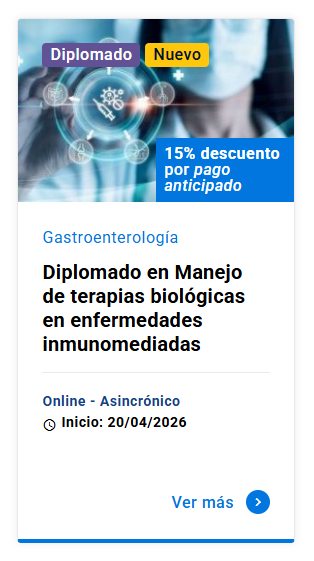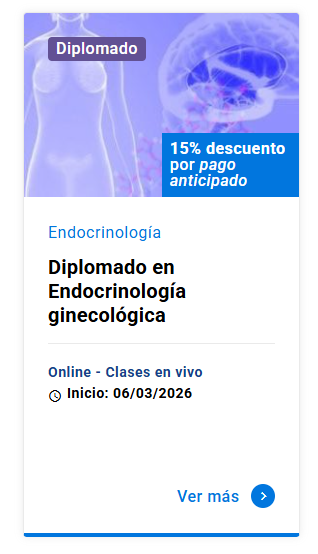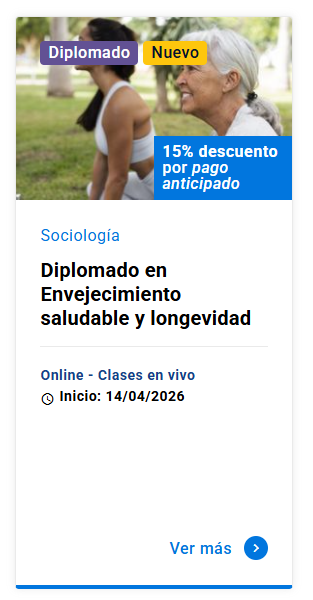Informe para el Tribunal Constitucional sobre los aspectos científicos y éticos del uso del levonorgestrel como anticonceptivo de emergencia
DOI:
https://doi.org/10.11565/arsmed.v37i2.115Palabras clave:
embrión humano, pÃldora, ovulación, fecundación, abortoResumen
Las normas de regulación de la fertilidad, propuestas en el documento del Ministerio de Salud de Chile, plantean diversos problemas biomédicos en el contexto de una cierta visión de la procreación humana, de la sexualidad y de la familia. Hay serias objeciones desde una antropología que respeta la naturaleza personal de la mujer y del hombre, especialmente en el riesgo que existe en la promoción de métodos que podrían afectar la vida de seres humanos inocentes en sus etapas iniciales de desarrollo. Del análisis de la literatura se ha concluido que existen antecedentes científicos importantes, que se analizan en este documento, y que indicarían que el uso de la llamada "píldora del día después" podría estar poniendo en riesgo la vida del embrión humano preimplantacional.Descargas
Citas
La definición de aborto de la Organización Mundial de la Salud define el aborto solo cuando se elimina un embrión después de implantado. Por esta razón denominan al efecto antiimplantatorio como efecto interceptivo. En este texto usaremos ambos términos como equivalentes. Pues lo sustancial del concepto es la eliminación de un ser humano desde la concepción (fecundación) al nacimiento.
Trussell et al. Effectiveness of the Yuzpe regimen of emergency contraception by cycle day of intercourse: implications for mechanism of action. Contraception 2003; 67; 167-171.
Glasier A. Emergency postcoital contraception. N Engl J Med 1997; 337: 1058-64.
OMS, Boletín Nº 51 de 1999, Progress in Human Reproduction.
Von Hertzen H. and van Look P. F. A. Research on new methods of emergency contraception: Research on new methods of emergency contraception. Fam Plann Perspec. 1996 Mar-Apr; 28 (2): 52-7, 88. “Compounds that work only through disturbing ovulation or some event closely associated with it cannot be highly effective as emergency methods.†“Thus, to achieve the highest possible efficacy, the ideal emergency contraceptive drug needs to act interceptively; that is, it should be capable of interfering with a physiological event that occurs after fertilization -during the period of early embryonic development prior to implantationâ€.
Ho P. C., Kwan M. S. A prospective randomized comparison of levonorgestrel with the Yuzpe regimen in post-coital contraception. Hum Reproduction 1993; 8: 389-92.
WHO Task Force on Postovulatory Methods of Fertility Regulation. Randomized controlled trial of levonorgestrel versus the Yuzpe regimen of combined oral contraceptives for emergency contraception. Lancet 1998; 352: 428-33.
Von Hertzen H., Piaggio G., Ding J., Chen J., Song S., Bartfai G., Ng E., Gemzell-Danielsson K., Oyunbileg A., Wu S., Chen W. et al. (2002) Low dose mifepristone and two regimens of levonorgestrel for emergency contraception: a WHO multicentre randomized trial. Lancet 2002 360, 1803-1810.
Hamoda H., Ashok P. V., Stadler C. et al. A Randomized Trial of Mifepristone (10 mg) and Levonorgestrel for Emergency Contraception. Obstet Gynecol 2004; 104: 1307-13.
Wai Ngai S., Fan S., Li S., Cheng L. et al. A randomized trial to compare 24 h versus 12 h double dose regimen of levonorgestrel for emergency contraception. Hum Reprod 2005 Jan; 20 (1): 307-3.
OMS, Boletín Nº 51 de 1999, Progress in Human Reproduction.
Hapangama D., Glasier A. F., Baird D. T. The effects of pre-ovulatory administration of levonorgestrel on the menstrual cycle. Contraception 2001; 63: 123-9.
Durand M., Cravioto M. C., Raymond E. G., Durán-Sánchez O., De la Luz-Hinojosa M., Castell Rodríguez A. et al. On the mechanism of action of short-term levonorgestrel administration in emergency contraception. Contraception 2001; 64: 227-34.
Marions L., Hultenby K., Lindell I., Sun X., Stabi B., Gemzell-Danielsson K. Emergency contraception with mifepristone and levonorgestrel: mechanism of action. Obstet Gynecol 2002; 100: 65-71.
Croxatto H. B. et al. Pituitary-ovarian function following the standard levonorgestrel emergency contraceptive dose or a single 0,75 mg dose given on days preceding ovulation. Contraception 2004; 70: 442-450.
Kesseraü E. et al. The hormonal and peripheral effects of dl-norgestrel in postcoital contraception. Contraception 1974; 10: 411-424.
Yeung W. S. B. et al. The effects of levonorgestrel on various sperm functions. Contraception 2002; 66: 453-437.
Brito K. S., Bahamondes L., Nascimento J. A., de Santis L., Munuce M. J. The in vitro effect of emergency contraception doses of levonorgestrel on the acrosome reaction of human spermatozoa. Contraception. 2005 Sep; 72 (3): 225-8.
Gemzell-Danielsson K. and Marions L. Mechanisms of action of mifepristone and levonorgestrel when used for emergency contraception. Hum Reprod Update. 2004 Jul-Aug; 10(4): 341-8. “The observations described by Kesseraü et al. are probabely of importance when levonorgestrel is used as a regular contraceptive but unlikely to be the main mechanism of action of levonorgestrel used for emergency contraception since sperm can be retrieved from the Fallopian tube minutes after insemination (Kurz et al., 1996)â€.
Muller A. L., Llados C. M., Croxatto H. B. Postcoital treatment with levonorgestrel does not disrupt post-fertilization events in the rat. Contraception 2003; 67: 415-9.
Oritiz M. E., Ortiz R. E., Fuentes M. A., Parraguez V. H., Croxatto H. B. Post-coital administration of levonorgestrel does not interfere with post-fertilization events in the new-world monkey Cebus apella. Hum Reprod 2004; 19: 1-5. 22 Croxatto H. B., Devoto L., Durand M., Ezcurra E., Larrea F., Nagle C., et al. Mechanism of action of hormonal preparations used for emergency contraception: a review of the literature. Contraception 2001; 63: 111-21.
Moggia A., Beauquis A., Ferrari F., Torrado M. L., Alonso J. L., Koremblit E., Mischler T. The use of progestogens as postcoital oral contraceptives J Reprod Med. 1974 Aug; 13 (2): 58-61.
Landgren B. M., Johannisson E., Aedo A. R., Kumar A., Shi Y. E. The effect of levonorgestrel administered in large doses at different stages of the cycle on ovarian function and endometrial morphology. Contraception 1989 Mar; 39 (3): 275-89.
Wang J. D., Jie W., Jie C., et al. Effects of emergency contraceptive mifepristone and levonorgestrel on the endometrium at the time of implantation. International Conference on Reproductive Health, Mumbai, India 1998; A83.
Durand M., Cravioto M. C., Raymond E. G., Durán-Sánchez O., De la Luz-Hinojosa M., Castell Rodriguez A., et al. On the mechanism of action of short-term levonorgestrel administration in emergency contraception. Contraception 2001; 64: 227-34.
Marions L., Hultenby K., Lindell I., Sun X., Stabi B., Gemzell-Danielsson K. Emergency contraception with mifepristone and levonorgestrel: mechanism of action. Obstet Gynecol 2002; 100: 65-71.
Ugocsai G., Rozsa M., Ugocsai P. Scanning electron microscopic (SEM) changes of the endometrium in women taking high doses of levonorgestrel as emergency post-coital contraception. Contraception. 2002 Dec; 66 (6): 433-7.
P. G. L. Lalitkumar, S. Lalitkumar, C. X. Meng et al. Mifepristone, but not levonorgestrel, inhibits human blastocyst attachment to an in vitro endometrial three-dimensional cell culture model. Hum 2007, Reprod. 22; 11: 3031.
Novikova N., Weisberg E., Stanczyk F. Z., Croxatto H. B., Fraser I. S. Effectiveness of levonorgestrel emergency contraception given before or after ovulation – a pilot study. Contraception. 2007 Feb; 75 (2): 112-8.
Wilcox A. J., Weinberg C. R., Baird D. D. Timing of sexual intercourse in relation to ovulation: effects on the probability of conception, survival of the pregnancy, and sex of the baby. N. Engl. J. Med. 1995; 333: 1517-21.
Van Look P. y Von Hertzen H. Emergency Contraception. Brit Med Bull 1993; 49: 158-170.
Mikolajczyk R. F. and Joseph B. Stanford J. B. Levonorgestrel Emergency Contraception: a joint analysis of effectiveness and mechanism of action. Fertil Steril. 2007 Sep.; 88 (3): 565-71.
Trussell J. Plan B and the Politics of Doubt. JAMA, October 11, 2006; 296: 1775-1778. 35 Haynes B. Can it work? Does it work? Is it worth it? BMJ 1999; 319; 652-653.
Trussell J., Stewart F. The effectiveness of post-coital hormonal contraception. Fam Plann Perspect 1992 Nov.-Dec.; 24 (6): 262-4.
Normas Nacionales sobre Regulación de la Fertilidad, Gobierno de Chile Ministerio de Salud. 2006.
Glasier A. Emergency contraception. ¿Is it worth all the fuss? BMJ Editorial 2006; 333: 561.
Polis C. B., Schaffer K., Blanchard K. et al. Advance provision of emergency contraception for pregnancy prevention (full review). Cochrane Database of Systematic Reviews 2007.
Raymond E. G. and Trussell J. Population Effect of Increased Access to Emergency Contraceptive Pills, Obstet Gynecol 2007; 109: 1818.
Descargas
Publicado
Cómo citar
Número
Sección
Categorías
Licencia
Derechos de autor 2008 ARS MEDICA Revista de Ciencias Médicas

Esta obra está bajo una licencia internacional Creative Commons Atribución-CompartirIgual 4.0.
Los autores/as conservan sus derechos de autor y garantizan a la revista el derecho de primera publicación de su obra, la que estará simultáneamente sujeta a la Licencia CC BY-SA 4.0 (Ver declaración de Acceso Abierto).







